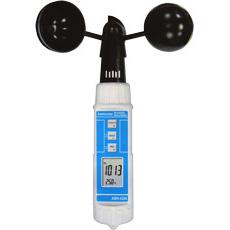Anemometers are necessary for measuring wind speed and are a widely spread device. They are utilized in agricultural, industrial, educational, and community settings.
Different Anemometer Varieties:
Pitot Tube Anemometer:
To measure the velocity and temperature of the air moving between moderate and high speeds, we use this anemometer. Pitot tubes are typically constructed with two openings. The first hole faces the wind direction and monitors stagnation pressure. The side hole of the Pitot tube monitors static pressure. By computing the difference between these two pressure readings, a wind velocity value can be created from a dynamic pressure reading.
Applications:
- Flow vents
- Exhaust vents
- HVAC or HVAR systems
Hotwire Anemometers:
For hotwire anemometers to function, the wind’s cooling action is employed to remove heat from the wire. They consist of a tiny wire that is electrically heated on the sensor, and the wire’s temperature is slightly higher than the ambient temperature. If an airflow begins to cool down the wire, the instrument will maintain its constant temperature. The meter determines the air velocity based on the amount of current necessary to maintain the wire’s temperature.
Applications:
- Additional HVAC uses.
- Monitoring of exhaust emissions
- Monitoring flow of foods
Vane Anemometer:
Such anemometers measure wind speed using impellers, propellers, or turbines that function similarly to propellers or turbines.
To achieve an accurate measurement from a vane anemometer, the vane must be oriented at the wind source, causing the blade to begin spinning as it confronts the wind source.
Each time the magnetized blade passes over the reed switch, the device transforms this measurement into a measurement of the windspeed at that instant within a predetermined timeline.
Applications:
- HVAC applications
- Diverse outside surveillance duties
Cup Anemometer:
There are three cups on the rod of a cup anemometer, each of which is coupled to horizontally placed vertical arms on the rod. As wind velocity rises, there are no restrictions on the movement of the cups.
In conventional vane anemometers, a reed switch or sensor measures the number of revolutions over a set time, which is then transformed into a wind speed metric based on the number of rotations.
The sole difference between cup and vane anemometers is that cup anemometers do not need the user to face the wind direction to estimate wind speed.
Applications:
Cup anemometers can measure wind speed in mines, construction sites, schools, agriculture, etc.







